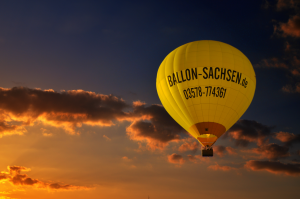- This topic is empty.
-
AuthorPosts
-
14/07/2025 at 14:14 #8258
When it comes to photography, lighting is arguably the most critical element that can make or break an image. Understanding how to analyze lighting effectively can elevate your photography from mere snapshots to compelling visual narratives. This post delves into the multifaceted aspects of lighting analysis, providing photographers with practical insights to enhance their craft.
1. Understanding the Types of Light
Before diving into analysis, it’s essential to categorize the types of light you may encounter:
– Natural Light: This includes sunlight and moonlight. Natural light varies throughout the day and is influenced by weather conditions, time of year, and geographical location. Photographers should pay attention to the golden hour—shortly after sunrise and before sunset—when the light is softer and warmer.
– Artificial Light: This encompasses any light source created by humans, such as flash, LED lights, and studio strobes. Understanding the color temperature and intensity of artificial light is crucial for achieving the desired mood in your photographs.
2. Analyzing Light Quality
Light quality refers to the characteristics of light, including its hardness or softness, direction, and color.
– Hard vs. Soft Light: Hard light creates sharp shadows and high contrast, often resulting in dramatic images. Conversely, soft light diffuses shadows and reduces contrast, producing a more flattering effect. To analyze light quality, observe the shadows it casts. A well-defined shadow indicates hard light, while a soft, gradual transition suggests soft light.
– Direction of Light: The direction from which light hits your subject can dramatically alter the perception of depth and texture. Front lighting minimizes shadows and flattens features, while side lighting enhances texture and dimension. Backlighting can create silhouettes or add a halo effect, depending on the exposure settings. Analyzing the light’s direction involves observing how it interacts with your subject and the environment.
3. Color Temperature and Its Impact
Color temperature, measured in Kelvin (K), plays a vital role in the mood and tone of your images.
– Warm Light (2000K-3500K): Often associated with sunrise and sunset, warm light can evoke feelings of comfort and nostalgia.
– Neutral Light (3500K-5500K): This range is typically found during midday and is ideal for capturing true colors without distortion.
– Cool Light (5500K-10000K): Found in shaded areas or during overcast conditions, cool light can create a moody or dramatic effect.
To analyze color temperature, use a gray card or a color checker during your shoot to ensure accurate white balance. Post-processing software can also help adjust color temperature for the desired effect.
4. Utilizing Light Modifiers
Light modifiers, such as reflectors, diffusers, and softboxes, can significantly alter the quality and direction of light.
– Reflectors: These tools bounce light back onto your subject, filling in shadows and creating a more balanced exposure. Analyzing the placement and angle of your reflector can help you achieve the desired lighting effect.
– Diffusers: By softening harsh light, diffusers create a more even illumination. Understanding how to position a diffuser relative to your light source can help you control the softness of the light.
– Softboxes and Umbrellas: These studio tools are designed to create soft, diffused light. Analyzing the size and distance of these modifiers from your subject can help you achieve the ideal lighting setup.
5. Practical Tips for Lighting Analysis
– Experimentation: The best way to understand lighting is through experimentation. Take the time to shoot in various lighting conditions and analyze the results.
– Use a Light Meter: A light meter can provide precise readings of light intensity, helping you make informed decisions about exposure settings.
– Study the Masters: Analyze the work of renowned photographers. Pay attention to how they utilize light and consider how you can incorporate similar techniques into your work.
Conclusion
Analyzing lighting in photography is a skill that requires practice and a keen eye. By understanding the types of light, analyzing its quality, and utilizing modifiers effectively, photographers can create stunning images that resonate with viewers. Remember, light is not just a tool; it is the essence of photography itself. Embrace the challenge of mastering it, and your images will undoubtedly reflect your dedication and artistry.
-
AuthorPosts
- You must be logged in to reply to this topic.



